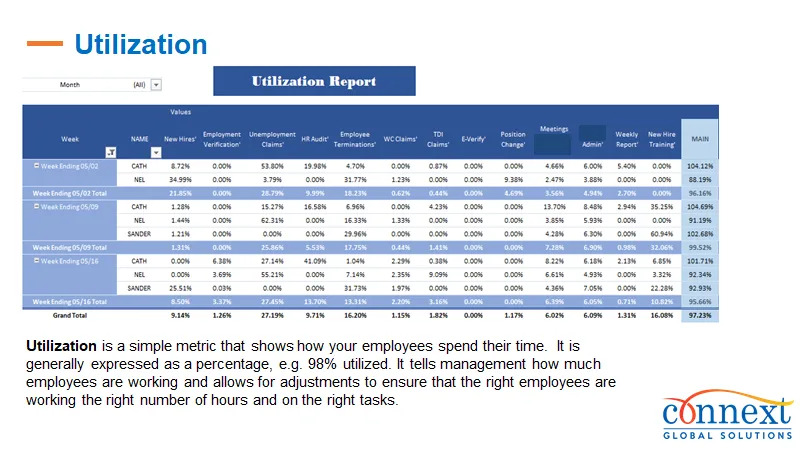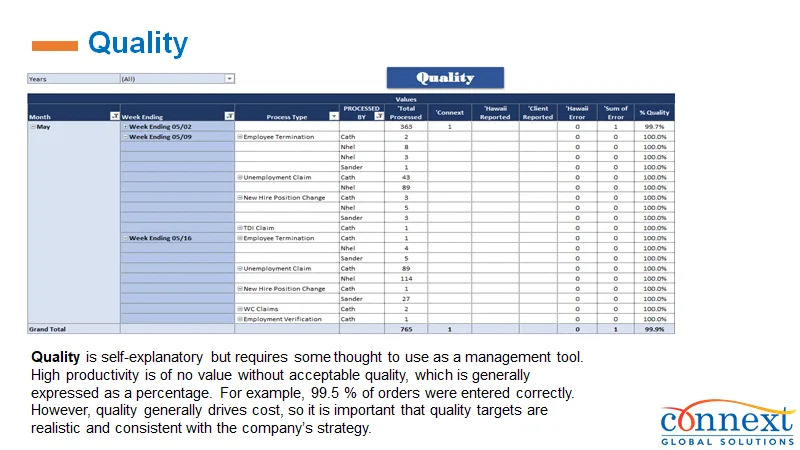Businesses are navigating a global talent crunch and location matters more than ever. Nearshore staff augmentation is emerging as a strategic solution, offering access to skilled professionals in neighboring regions without the cost and complexity of offshore operations. As companies look to scale efficiently, nearshoring combines the best of both worlds: proximity, cost savings, and seamless collaboration.
Here’s an in-depth look at what nearshore staff augmentation is and how it can benefit your business.
What Is Nearshore Staff Augmentation?
Nearshore staff augmentation is the process of hiring external professionals or teams from geographically proximate countries to complement your existing workforce. Unlike offshoring, which often involves working with teams located far from your home country, nearshoring minimizes time zone differences, cultural gaps, and logistical challenges. Economic downturns that may affect service delivery may also be remedied with nearshoring. For example, companies in the United States often partner with talent from a Latin American country, while European firms might work with professionals in Eastern Europe or North Africa.
Key Benefits of Nearshore Staff Augmentation
1. Access to a Skilled Talent Pool
Nearshore staff augmentation provides access to highly skilled professionals in fields such as IT, customer service, accounting, healthcare, and engineering. These individuals bring specialized expertise that may not be readily available in your local market.
2. Cost Efficiency
Hiring talent from nearshore locations can significantly reduce labor costs without compromising quality. Wage differences between countries often make nearshoring a more affordable option compared to hiring locally or using onshore outsourcing services.
3. Cultural and Time Zone Alignment
Geographic proximity fosters stronger cultural alignment and linguistic compatibility. Working within similar time zones ensures real-time communication, faster problem resolution, and smoother project management.
4. Scalability and Flexibility
Nearshore staff augmentation enables businesses to scale their teams up or down based on project needs and operational expenses. This flexibility is particularly valuable for seasonal projects, product launches, or unexpected surges in demand.
5. Enhanced Focus on Core Activities
By delegating non-core tasks or specialized projects to nearshore teams, your in-house staff can focus on strategic initiatives that drive growth and innovation.
6. Improved Business Continuity
Building a nearshore team adds an extra layer of resilience to your business operations. With teams distributed across different regions, you can ensure continuity in the face of local disruptions or emergencies.

Nearshoring vs. Offshoring
While both offer cost savings and access to global talent, nearshore staff augmentation often provides better alignment with your business needs. The shorter distances and smaller time zone differences associated with nearshoring result in fewer communication barriers, faster turnaround times, and stronger working relationships.
Industries Benefiting from Nearshoring
Businesses across various industries are leveraging nearshore staff augmentation for tasks such as:
1. Software Development
Building and maintaining applications, websites, and digital platforms.
2. Customer Support
Providing multilingual support to enhance customer satisfaction.
3. Finance and Accounting
Managing accounts payable, accounts receivable, and financial reporting.
4. Healthcare Services
Supporting administrative tasks like claims processing, medical billing, and patient scheduling.
5. Marketing and Creative Services
Delivering graphic design, content creation, and digital marketing campaigns.
Disadvantages of Nearshoring
1. Cultural Differences
Despite the geographical proximity that nearshoring offers, cultural differences can still pose significant challenges. While many nearshore locations share linguistic and cultural traits with their neighboring countries, subtle differences in business practices, communication styles, and work ethics can lead to misunderstandings and friction.
Addressing the Challenge: To mitigate cultural differences, organizations should invest in cultural training for both their internal teams and their nearshoring partners. Encouraging open communication and fostering a culture of understanding can help bridge any language barriers or gaps, ensuring smoother collaboration.
2. Time Zone Variability
Although nearshoring often leads to reduced time zone disparities compared to offshoring, there can still be potential disruptions in working hours. Such differences can complicate real-time collaboration, delay responses to urgent issues, and ultimately affect project timelines.
Addressing the Challenge: Establishing clear communication protocols and overlapping working hours can help mitigate the impact of time zone differences. Using tools such as project management software and regular check-in meetings can ensure that all team members are aligned and can address issues proactively.
3. Talent Pool Limitations
While nearshoring allows access to a broader talent pool, it is essential to recognize that not all nearshore locations offer the same level of skill availability. Some regions may have a surplus of qualified candidates in specific fields, while others may struggle to meet demand.
Addressing the Challenge: Organizations should partner with a reliable nearshoring partner who understands the talent landscape in potential nearshore locations.
4. Quality Control
Different standards of quality and varying practices in the nearshore location can result in inconsistencies in deliverables. Furthermore, remote collaboration can make it challenging to enforce quality standards and monitor progress effectively.
Addressing the Challenge: Companies should establish clear quality benchmarks and performance metrics from the outset. Regular quality audits and on-site visits, if feasible, can help ensure that the nearshoring partner is meeting the required standards.
5. Legal and Regulatory Concerns
Each country has its own set of laws governing labor, taxation, intellectual property rights, and data protection, which can create compliance challenges. Failure to adhere to these regulations can result in financial penalties and damage to the company’s reputation.
Addressing the Challenge: Organizations should engage with a legal expert in international business law to navigate the regulatory environment effectively. Drafting comprehensive contracts that clearly outline responsibilities, deliverables, and compliance requirements can help mitigate legal risks.
6. Building Trust and Communication
Establishing trust is crucial for successful collaboration in a nearshoring arrangement. Miscommunication, lack of visibility, and differing expectations can undermine trust and lead to a breakdown in collaboration.
Addressing the Challenge: Companies should prioritize regular communication and relationship-building activities. Using video conferencing tools, chat applications, and collaborative platforms can facilitate transparent and effective communication.
Best Practices for Successful Nearshoring
1. Assess Your Needs
Identify the roles and skills you need to augment your team.
2. Choose the Right Partner
Work with a reputable nearshore outsourcing provider that understands your industry and requirements.
3. Establish Clear Goals
Define objectives, timelines, and performance metrics for the partnership.
4. Invest in Onboarding and Integration
Ensure your nearshore team feels like an extension of your in-house staff by fostering collaboration and communication.
Conclusion
Nearshore staff augmentation delivers more than just cost savings — it gives businesses the agility to scale, access top talent, and weather risks like economic instability. With the right partner, companies can close skill gaps, boost productivity, and stay ahead in a competitive market. Any business that wants to succeed in this landscape would benefit greatly from having nearshoring as part of their contingency plans.
Ready to harness the benefits of nearshoring? Connect with Connext today to build a high-performing team that helps your business move faster and smarter.
FAQs on Nearshoring Benefits for Businesses
Nearshoring refers to outsourcing business processes or services to a nearby country, typically with a similar cultural, political, and economic environment. Unlike traditional offshoring, which often involves relocating operations to far-off countries, nearshoring allows companies to maintain cultural alignment, reduce time zone differences, mitigate disruptions such as natural disasters, and improve communication while achieving cost savings.
Nearshoring is ideal for businesses of all sizes looking to scale their operations, improve efficiency, and reduce costs without sacrificing quality. If your business needs skilled talent, faster project delivery, and better collaboration — nearshore staff augmentation could be the right solution.
– Cost Advantages: Nearshoring often results in lower operational and labor costs compared to domestic operations. This can significantly enhance your bottom line while maintaining quality.
– Access to Skilled Labor: Many nearby countries have specialized talent pools. By nearshoring, you can tap into unique skills and expertise that may not be readily available in your home country.
– Cultural Compatibility: Working with partners in similar cultural contexts reduces the likelihood of misunderstandings and enhances collaboration.
– Geographical Proximity: Being closer geographically means reduced travel time and expenses, as well as easier management of operations and oversight.
– Similar Time Zones: This facilitates more efficient communication and project management, allowing for real-time collaboration.
To achieve the best results from your nearshoring efforts, consider the following actionable steps:
– Conduct Thorough Research: Evaluate potential nearshoring destinations based on their workforce skills, stability, and cultural fit with your organization.
– Choose the Right Partner: Work with reputable nearshoring services providers like Connext Global Solutions, who have experience in managing cross-border collaborations.
– Set Clear Expectations: Establish transparent communication protocols and define roles and responsibilities to avoid misunderstandings.
– Monitor and Evaluate: Regularly assess the performance of your nearshoring partner against agreed-upon metrics to ensure alignment with your business objectives.
Nearshoring offers significant advantages for various sectors, including:
– Healthcare & Life Sciences: Access to specialized talent for bilingual patient support and data management.
– Financial & FinTech: Enhanced security and regulatory compliance by working with partners in similar legal environments.
– SaaS & IT: Rapid scalability and access to cutting-edge technology.
Manufacturing: Improved supply chain efficiency and proximity to key markets.
Before committing to a nearshoring strategy, consider:
– Regulatory and Legal Framework: Ensure that your nearshore partner complies with local regulations and standards.
– Political and Economic Stability: Assess potential risks associated with the political climate and economic conditions of the chosen country.
– Cultural and Language Factors: Evaluate the cultural similarities and language proficiency of the workforce in the prospective nearshoring location.
Connext Global Solutions specializes in helping businesses navigate the complexities of nearshoring. Our services include:
– Tailored Partner Matching: We connect you with the right nearshore partners based on your specific needs, industry, and project requirements.
– Risk Management Support: Our team provides insights into potential risks associated with your nearshoring choices and offers strategies to mitigate them.
– Ongoing Management and Oversight: We assist in establishing communication channels and performance metrics to ensure a smooth working relationship.
By leveraging Connext Global Solutions, you can maximize the nearshoring benefits for your company while minimizing risks, resulting in enhanced operational efficiency and innovation.









